Bumblebee cichlids are aggressive and territorial, particularly the males, who will defend their territory and fight for the right to breed. When choosing tank mates for bumblebee cichlids, it is important to consider their aggressive nature and find compatible species that can coexist peacefully.
Some suitable tank mates include Golden mbuna, Melanochromis chipokae, and Pseudotropheus cyaneorhabdos, which are all fellow Lake Malawi residents. Careful consideration and research should be done to ensure a harmonious and stress-free tank environment for bumblebee cichlids.
Table of Contents
Why Choosing The Right Tank Mates Is Important
Choosing the right tank mates is crucial for bumblebee cichlids. Optimal options include golden mbuna, Melanochromis chipokae, and Pseudotropheus cyaneorhabdos, as they are fellow Lake Malawi residents. Creating a harmonious tank environment ensures the wellbeing and health of your bumblebee cichlids.
Creating A Harmonious And Balanced Aquarium Ecosystem:
- Ensuring a harmonious and balanced aquarium ecosystem is vital for the health and well-being of your Bumblebee Cichlid and other tank mates.
- By selecting the right tank mates, you can create a peaceful environment where your Bumblebee Cichlid can thrive.
- Here are some key points to consider when choosing tank mates for your Bumblebee Cichlid:
- Compatibility: Select fish species that are naturally compatible with Bumblebee Cichlids. This will reduce the chances of aggression and territorial disputes.
- Water parameters: Ensure that the tank mates have similar water parameter requirements. This includes temperature, pH level, and water hardness. Maintaining consistent water conditions will promote the overall health of all fish in the tank.
- Size: Choose tank mates that are similar in size to your Bumblebee Cichlid. This will minimize the risk of one fish overpowering the other and reduce the potential for aggression.
- Bottom-dwelling fish: Consider adding bottom-dwelling fish, such as catfish or loaches, as tank mates. These fish occupy different areas of the tank, reducing competition for space and resources.
Reducing Stress And Aggression In The Tank:
- Selecting the right tank mates for your Bumblebee Cichlid can help reduce stress and aggression in the tank.
- Here are some benefits of choosing compatible tank mates:
- Sustained well-being: Providing appropriate tank mates will help create a stress-free environment. Reduced stress levels promote better overall health and longevity for all fish in the tank.
- Diverting territorial behavior: Adding tank mates that occupy different areas of the tank can divert the Bumblebee Cichlid’s attention away from defending its territory. This can help minimize aggressive behavior.
- Natural behavior stimulation: Some tank mates can engage in symbiotic relationships with Bumblebee Cichlids, stimulating their natural behavior and creating a more balanced ecosystem.
- Social interaction: Choosing tank mates that exhibit similar behavior patterns can provide social interaction and companionship for your Bumblebee Cichlid. This can help alleviate stress and improve their overall well-being.
Remember, it is essential to research and carefully consider the compatibility and needs of potential tank mates before introducing them to your Bumblebee Cichlid’s aquarium. By creating a harmonious and balanced habitat, you can ensure a thriving and peaceful tank for all inhabitants.
Suitable Tank Mates For Bumblebee Cichlids
When choosing tank mates for Bumblebee Cichlids, it is best to consider fellow Lake Malawi residents like Golden Mbuna and Melanochromis Chipokae. These fish are compatible in terms of habitat and behavior, ensuring a harmonious tank environment.
Bristlenose Pleco:
- Bristlenose Plecos are a great tank mate for Bumblebee Cichlids because they have a peaceful temperament.
- They are bottom dwellers and will help keep the tank clean by eating algae.
- Bristlenose Plecos are hardy and can adapt to various water conditions, making them a suitable companion for Bumblebee Cichlids.
White Tail Aceis:
- White Tail Aceis are known for their vibrant colors, which can provide a beautiful contrast to the Bumblebee Cichlids.
- They are peaceful cichlids and can coexist well with Bumblebee Cichlids.
- White Tail Aceis prefer a diet consisting of herbivorous foods, which makes them compatible with Bumblebee Cichlids.
Electric Yellow Lab:
- Electric Yellow Labs are another suitable tank mate for Bumblebee Cichlids.
- They are peaceful and have a bright yellow color that can add visual interest to the tank.
- Electric Yellow Labs and Bumblebee Cichlids have similar water parameter requirements, making them compatible tank mates.
Golden Mbuna:
- Golden Mbunas are a type of Malawi cichlid that can be a good match for Bumblebee Cichlids.
- They have a peaceful temperament and can coexist well with Bumblebee Cichlids.
- Golden Mbunas are known for their vibrant colors, which can complement the Bumblebee Cichlids in the tank.
Chipokae Cichlid:
- Chipokae Cichlids are suitable tank mates for Bumblebee Cichlids.
- They are known for their vibrant coloration and can add visual interest to the tank.
- Chipokae Cichlids have a peaceful temperament, making them compatible with Bumblebee Cichlids.
Lemon Cichlid:
- Lemon Cichlids can be a compatible tank mate for Bumblebee Cichlids.
- They have striking lemon-yellow coloration that can provide a beautiful contrast in the tank.
- Lemon Cichlids have a peaceful temperament and can coexist well with Bumblebee Cichlids.
Fairy Cichlid:
- Fairy Cichlids are a suitable choice for tank mates with Bumblebee Cichlids.
- They have a peaceful temperament and can coexist well with Bumblebee Cichlids.
- Fairy Cichlids are known for their vibrant colors and can add visual interest to the tank.
Maingano Cichlid:
- Maingano Cichlids can be a compatible tank mate for Bumblebee Cichlids.
- They have a mix of blue and black coloration, which can create an attractive contrast in the tank.
- Maingano Cichlids have a somewhat aggressive temperament, so it’s important to monitor their behavior when keeping them with Bumblebee Cichlids.
With these suitable tank mates, you can create a colorful and harmonious community tank with your Bumblebee Cichlids. Remember to ensure proper tank size, water parameters, and provide appropriate hiding spots for all the fish to thrive happily together.
Factors To Consider When Choosing Tank Mates
When choosing tank mates for Bumblebee Cichlids, it is important to consider fellow Lake Malawi residents such as Golden Mbuna, Melanochromis chipokae, and Pseudotropheus cyaneorhabdos. These compatible tank mates will help create a harmonious and balanced aquarium environment.
When setting up a Bumblebee Cichlid tank, it’s important to carefully select compatible tank mates to create a harmonious aquatic community. Consider the following factors before introducing any new fish to the tank:
Similar temperament and aggression levels:
- Bumblebee Cichlids are known to be aggressive and territorial, especially males. They will vigorously defend their area of the tank if they perceive a threat. Therefore, it’s crucial to choose tank mates with a similar temperament to ensure they can coexist peacefully.
- Avoid introducing passive or docile fish that may become targets for aggression or stress in the presence of Bumblebee Cichlids.
Compatible water requirements and preferences:
- Different fish species have specific water requirements, such as preferred pH levels and temperature ranges. To avoid any conflicts, select tank mates that have similar water parameter needs as Bumblebee Cichlids.
- Keep in mind that Bumblebee Cichlids are typically found in Lake Malawi, which has alkaline water. Therefore, it’s advisable to choose fish that thrive in similar water conditions.
Proper tank size and space for each species:
- Adequate space is crucial to prevent overcrowding and minimize aggression among tank mates. Each species should have enough room to establish their territories and exhibit their natural behaviors.
- Consider the adult size of the fish when determining the appropriate tank size. Bumblebee Cichlids can grow to around 6 inches, so ensure you have a tank that can accommodate their size, as well as the size of any potential tank mates.
By carefully considering these factors, you can create a well-balanced and harmonious aquatic community in your Bumblebee Cichlid tank. Remember to choose tank mates with a similar temperament, compatible water requirements, and provide enough space for each species to thrive.
Temperament And Aggression Levels
Bumblebee Cichlids are aggressive and territorial, especially males, who will fight over females and defend their area in the tank. Ideal tank mates for Bumblebee Cichlids are other Lake Malawi residents like Golden Mbuna and Melanochromis chipokae.
Bumblebee Cichlids’ Aggressive Nature And Territorial Behavior
Bumblebee cichlids are known for their aggressive nature and territorial behavior. Here’s what you need to know:
- Bumblebee cichlids can be quite aggressive, especially males. They are highly territorial and will fiercely defend their area of the tank if they feel threatened.
- Males can become obsessed with females, constantly chasing and harassing them. This can lead to stress and potential harm to the female.
- They are also prone to fighting with other males for breeding rights. These fights can be intense and result in injuries or even death.
- Bumblebee cichlids establish territories within the tank, marking them as their own and defending them against intruders.
- Their aggressive behavior is a natural instinct and is more prominent during breeding seasons or when new fish are introduced to the tank.
Overall, it’s important to provide ample hiding spots and territories within the tank to help mitigate aggression. Additionally, it is recommended to only keep bumblebee cichlids with other aggressive cichlids to avoid conflicts.
Compatibility With Other Aggressive Cichlids
Bumblebee cichlids can be compatible with other aggressive cichlids, especially those from Lake Malawi. Here are some compatible tank mates:
- Electric Yellow Cichlid: These cichlids are similar in size and aggression level, making them suitable tank mates for bumblebee cichlids.
- Red Zebra Cichlid: These cichlids have a similar temperament and can coexist with bumblebee cichlids in a properly sized tank with enough hiding spots.
- Demanson’s Cichlid: Another aggressive cichlid species that can tolerate the territorial nature of bumblebee cichlids.
- Humphead Cichlid: These cichlids are known for their aggressive behavior and can hold their ground against bumblebee cichlids.
It’s important to note that even with compatible tank mates, aggression and territorial disputes can still occur. Monitoring the fish closely and providing enough space and hiding spots will help minimize conflicts. It’s always best to research and consult with experts to ensure a harmonious tank environment for all inhabitants.
Water Requirements And Preferences
Fellow Lake Malawi residents like Golden mbuna, Melanochromis chipokae, and Pseudotropheus cyaneorhabdos make ideal tank mates for bumblebee cichlids.
Bumblebee Cichlids have specific water requirements and preferences that need to be considered when choosing tank mates. These factors include pH levels, temperature, and water hardness. It is essential to ensure that the tank mates you select have similar water parameters to create a harmonious and healthy aquarium environment.
Let’s take a closer look at these considerations:
Ph:
- Bumblebee Cichlids prefer a pH range between 7.5 and 8.5.
- Keep the pH stable to avoid stressing the fish.
Temperature:
- Bumblebee Cichlids thrive in water temperatures that range between 75°F and 82°F.
- Maintain a consistent temperature to prevent fluctuations.
Water Hardness:
- Bumblebee Cichlids prefer hard water with a range of 10 to 18 dGH.
- Provide the appropriate water hardness to support their overall well-being.
When selecting tank mates for Bumblebee Cichlids, it is crucial to consider their compatibility with other fish species that require similar water parameters. This ensures a peaceful coexistence and reduces the risk of stress or aggression in the aquarium. Here are some fish species that can potentially be compatible with Bumblebee Cichlids:
- Peacock Cichlids (Aulonocara spp. ): These cichlids are known for their striking colors and typically have similar water requirements to Bumblebee Cichlids.
- Haplochromis Cichlids (e.g., Red Zebra Cichlids, Blue Dolphin Cichlids): These cichlids also originate from Lake Malawi and prefer comparable water parameters.
- Synodontis Catfish: These catfish species can be suitable tank mates as they are peaceful and can tolerate the same water conditions as Bumblebee Cichlids.
- African Glass Catfish: These unique catfish species can add a touch of diversity to the aquarium while thriving in similar water conditions.
Remember to always research and consider the temperament and behavior of each fish species when selecting tank mates for your Bumblebee Cichlids. This will help ensure a harmonious and flourishing aquatic community.

Credit: pethelpful.com
Tank Size And Space
Bumblebee cichlids are best kept with fellow Lake Malawi residents such as golden mbunas, Melanochromis chipokae, and Pseudotropheus cyaneorhabdos. They should be housed in a tank with ample space to accommodate their aggressive and territorial nature.
Providing Enough Space And Hiding Spots For Each Species:
- Bumblebee Cichlids are aggressive and territorial, so it is crucial to provide them with enough space in the tank.
- The recommended tank size for a single Bumblebee Cichlid is at least 30 gallons, but for a community tank, a larger tank of 55 gallons or more is preferable.
- Here are some key points to consider when providing enough space for your Bumblebee Cichlids and their tank mates:
- Aim for a tank length of at least 48 inches to allow for swimming space.
- Provide enough vertical space with a tank height of at least 18 inches.
- Avoid overcrowding by maintaining a ratio of one Bumblebee Cichlid per 30 gallons of water.
- Create hiding spots using rocks, caves, and driftwood to establish territories and reduce aggression.
- Decorate the tank with plants to provide additional hiding places and break line of sight.
The Importance Of Territorial Boundaries And Territories In The Tank:
- Bumblebee Cichlids are highly territorial fish, and establishing clear boundaries in the tank is essential for maintaining harmony among tank mates.
- Here are some important considerations regarding territorial boundaries and territories in the tank:
- Implement visual barriers such as rocks and plants to separate different territories.
- Each Bumblebee Cichlid should have its own designated hiding spots and territories to reduce aggression.
- Ensure that the tank layout allows for distinct territories, which can be defined by varying levels of rocks or different areas of the tank.
- Avoid placing fish with similar body shapes and colors in close proximity to minimize territorial disputes.
- Monitor the fish closely during the initial introduction and observe any signs of aggression or territorial behavior.
Remember, providing enough space and establishing territorial boundaries are crucial for maintaining a peaceful and harmonious tank environment for Bumblebee Cichlids and their tank mates. By following these guidelines, you can reduce aggression and ensure the well-being of all the fish in your aquarium.
Potential Incompatible Tank Mates To Avoid
Avoid potential incompatible tank mates for Bumblebee Cichlids, such as aggressive and territorial fish that may threaten their territory. Opt for compatible tank mates like Golden Mbuna, Melanochromis chipokae, and Pseudotropheus cyaneorhabdos for a harmonious aquarium environment.
Bumblebee Cichlids are known for their aggressive nature and territorial behavior, so it’s important to choose tank mates that can coexist peacefully with them. Here are some fish species that may not be suitable as tank mates for Bumblebee Cichlids:
- Peaceful and docile fish species that may be bullied or intimidated by Bumblebee Cichlids:
- Guppies
- Tetras
- Platies
- Swordtails
- Rasboras
These fish species have a peaceful temperament and may not be able to handle the aggression of Bumblebee Cichlids. They may be prone to stress or injury if housed together.
- Fish species with delicate fins that may be nipped or damaged by the aggressive nature of Bumblebee Cichlids:
- Angelfish
- Bettas
- Gouramis
- Fancy guppies
- Sailfin mollies
Bumblebee Cichlids are known to exhibit fin-nipping behavior, especially towards fish with long, flowing fins. Therefore, it is best to avoid pairing them with fish species that have delicate fins to prevent any potential harm.
When choosing tank mates for Bumblebee Cichlids, it’s important to consider their aggressive nature and territorial behavior. Opt for fish species that are peaceful and sturdy enough to handle their presence, while avoiding those with delicate fins that may get damaged.
By selecting compatible tank mates, you can create a harmonious and balanced aquatic community in your aquarium.
Introducing Tank Mates To The Bumblebee Cichlid Tank
When introducing tank mates to your Bumblebee Cichlid tank, it’s important to choose compatible species that can coexist peacefully. Ideal tank mates include Golden Mbuna, Melanochromis chipokae, and Pseudotropheus cyaneorhabdos.
Gradual And Careful Acclimation Process:
- When introducing new tank mates to a Bumblebee Cichlid tank, it is vital to follow a gradual and careful acclimation process to minimize stress and potential aggression. Here’s how you can do it:
- Before adding the new fish to the tank, make sure to keep them in a separate quarantine tank for a few weeks to observe their health and behavior.
- Adjust the temperature and pH levels of the quarantine tank to match those of the main tank gradually over a period of a few days.
- When it’s time to introduce the new fish to the Bumblebee Cichlid tank, use the drip acclimation method. This involves slowly adding water from the main tank to the quarantine tank over several hours, allowing the new fish to gradually adjust to the water conditions.
- Once the water in the quarantine tank is almost entirely from the main tank, carefully transfer the new fish to the Bumblebee Cichlid tank using a net. Avoid adding water from the quarantine tank to the main tank to prevent potential diseases or parasites from spreading.
- Monitor the behavior of the Bumblebee Cichlids and the new tank mates closely during the acclimation process to ensure compatibility and prevent aggression.
Monitoring Fish Behavior And Compatibility:
- It’s crucial to closely monitor the behavior of both the Bumblebee Cichlids and their tank mates to ensure compatibility and a harmonious tank environment. Here are some key points to consider:
- Keep an eye on the general behavior of the fish. Look for signs of aggression, such as chasing, fin nipping, or constant bickering. If any aggression is detected, it may be necessary to remove the aggressive individual or reconsider the choice of tank mates.
- Pay attention to the feeding habits of the fish. Aggression during feeding can be a sign of compatibility issues. If one fish constantly bullies others during mealtime, it may disrupt the feeding routine and lead to stress and malnutrition for the other tank mates.
- Notice any excessive hiding or stress-related behaviors. If the tank mates seem constantly stressed, hiding, or not displaying their natural behavior, it may indicate a compatibility issue. In such cases, it might be necessary to provide more hiding spots or consider different tank mates.
- Observe the overall health and well-being of the fish. Frequent aggression or stress can lead to weakened immune systems and potential health problems. If any fish show signs of illness or deteriorating health, separate and treat them accordingly.
Quarantine Procedures For New Fish Additions:
- Quarantine procedures are essential when introducing new fish to a Bumblebee Cichlid tank. Quarantining helps prevent the spread of diseases or parasites from the newly introduced fish to the existing tank inhabitants. Here’s how you can implement proper quarantine procedures:
- Set up a separate quarantine tank with proper filtration and heating to accommodate the new fish comfortably.
- Transfer the new fish to the quarantine tank and observe their behavior and overall health for at least two weeks. This period allows you to identify any potential health issues before introducing them to the main tank.
- During the quarantine period, keep a close eye on the fish for signs of diseases, such as unusual behavior, loss of appetite, or physical abnormalities. If any issues arise, consult with a veterinarian or an experienced aquarist for proper diagnosis and treatment.
- It is crucial to refrain from using any equipment from the quarantine tank, such as nets or siphons, in the main tank to avoid contamination.
- After the quarantine period, monitor the fish’s health and behavior closely during the acclimation process to ensure a smooth transition into the Bumblebee Cichlid tank.
Remember, by following a gradual acclimation process, monitoring fish behavior, and implementing proper quarantine procedures, you can increase the chances of successful tank mate introductions to your Bumblebee Cichlid tank.
Conclusion
Choosing the right tank mates for your Bumblebee Cichlids is crucial for their well-being and the overall harmony of the aquarium. It is important to consider their aggressive and territorial nature when selecting companions. Fellow Lake Malawi residents like Golden Mbuna, Melanochromis Chipokae, and Pseudotropheus Cyaneorhabdos are ideal tank mates for Bumblebee Cichlids.
These species share a similar habitat and temperament, reducing the chances of conflict. Bristlenose Pleco, White Tail Aceis, Electric Yellow Lab, and Lemon Cichlid can also make compatible tank mates, provided that the aquarium is spacious enough to accommodate them all comfortably.
Proper research and understanding of the characteristics and behaviors of different species will ensure a thriving and peaceful community tank. By following these guidelines, you can create a harmonious environment for your Bumblebee Cichlids and their tank mates, showcasing the beauty and diversity of the underwater world.
Frequently Asked Questions For Bumblebee Cichlid Tank Mates
Are Bumblebee Cichlids Aggressive?
Bumblebee cichlids are aggressive and territorial, especially the males, who fight over females and defend their territory.
How Big Does A Bumblebee Cichlid Get?
Bumblebee cichlids can grow to a size of about 4 to 5 inches.
Is A Bumblebee Cichlid A Mbuna?
No, a bumblebee cichlid is not a mbuna. Bumblebee cichlids are aggressive African cichlids with a belligerent temperament. They may be referred to as a mbuna due to their similar body shape.
What Is Compatible With Bumble Bee Goby?
Bumblebee goby is compatible with Bristlenose Pleco, White Tail Aceis, Electric Yellow Lab, Golden Mbuna, Chipokae Cichlid, Lemon Cichlid, Fairy Cichlid, and Maingano Cichlid.
References
The South American Cichlid Association (SACA)
The American Cichlid Association (ACA)
I am a passionate aquarist with over 30 years of hands-on experience in fishkeeping. My journey began at a young age, collecting fish from the wild and learning through experimentation. Specializing in tropical fish, I bring a deep understanding of the hobby to FishKeepingMadeSimple. The site provides honest, detailed reviews of essential products and accessories to help fellow enthusiasts create the best environments for their fish.

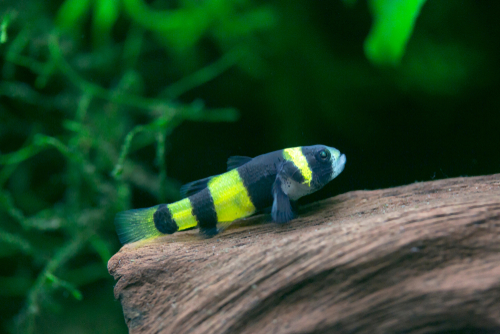
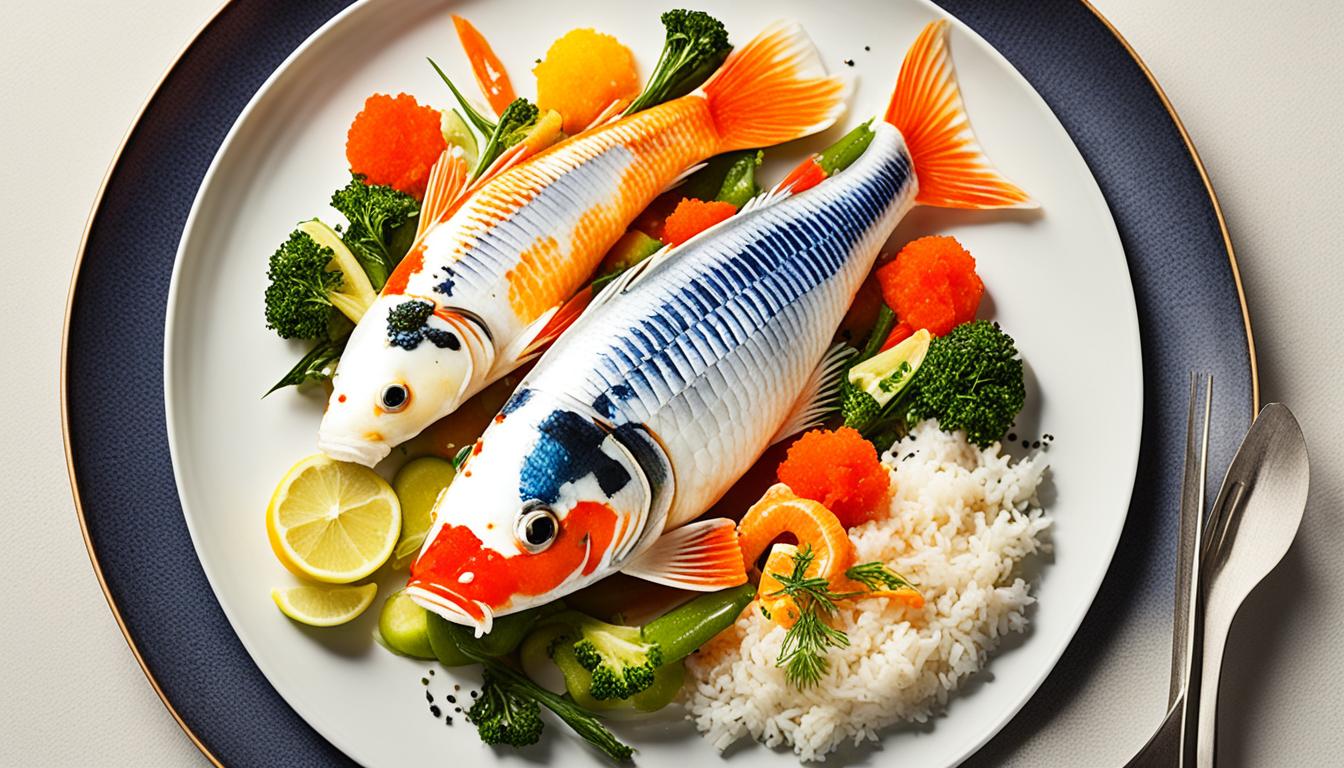
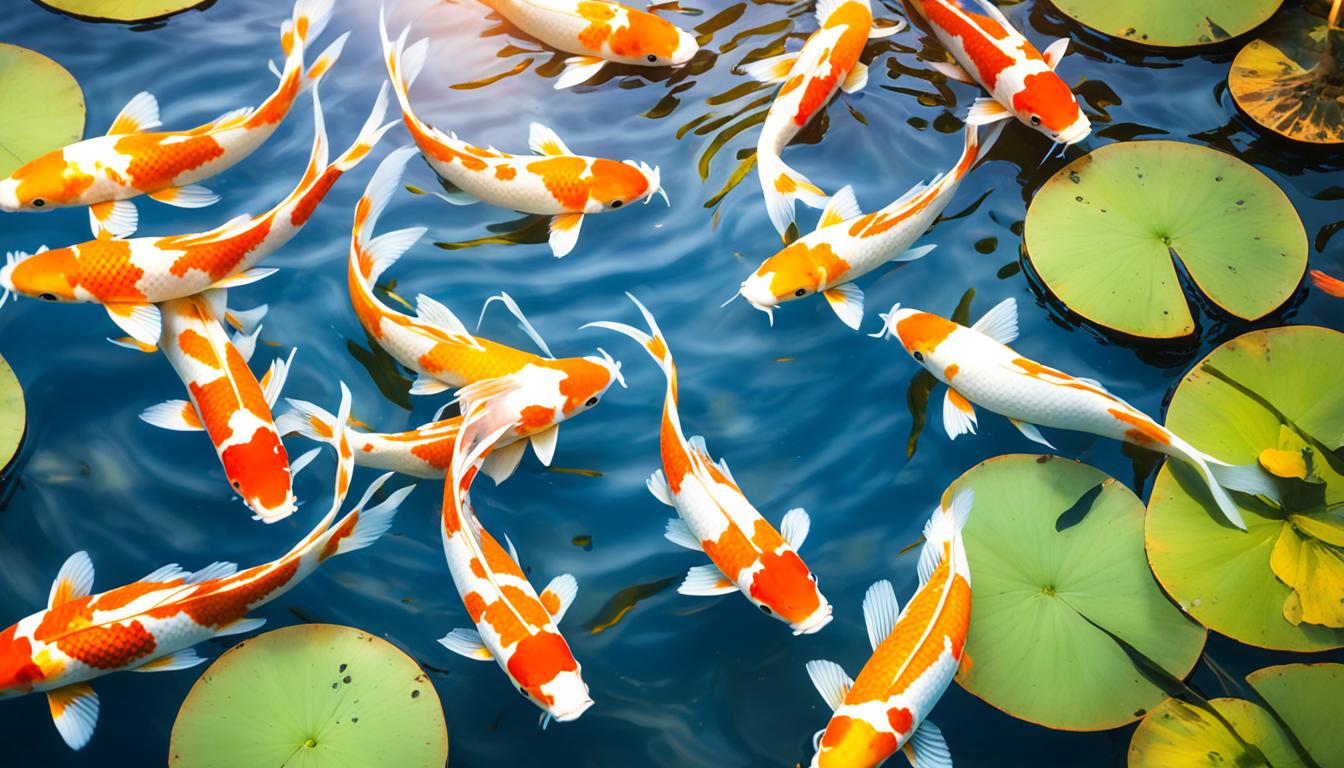
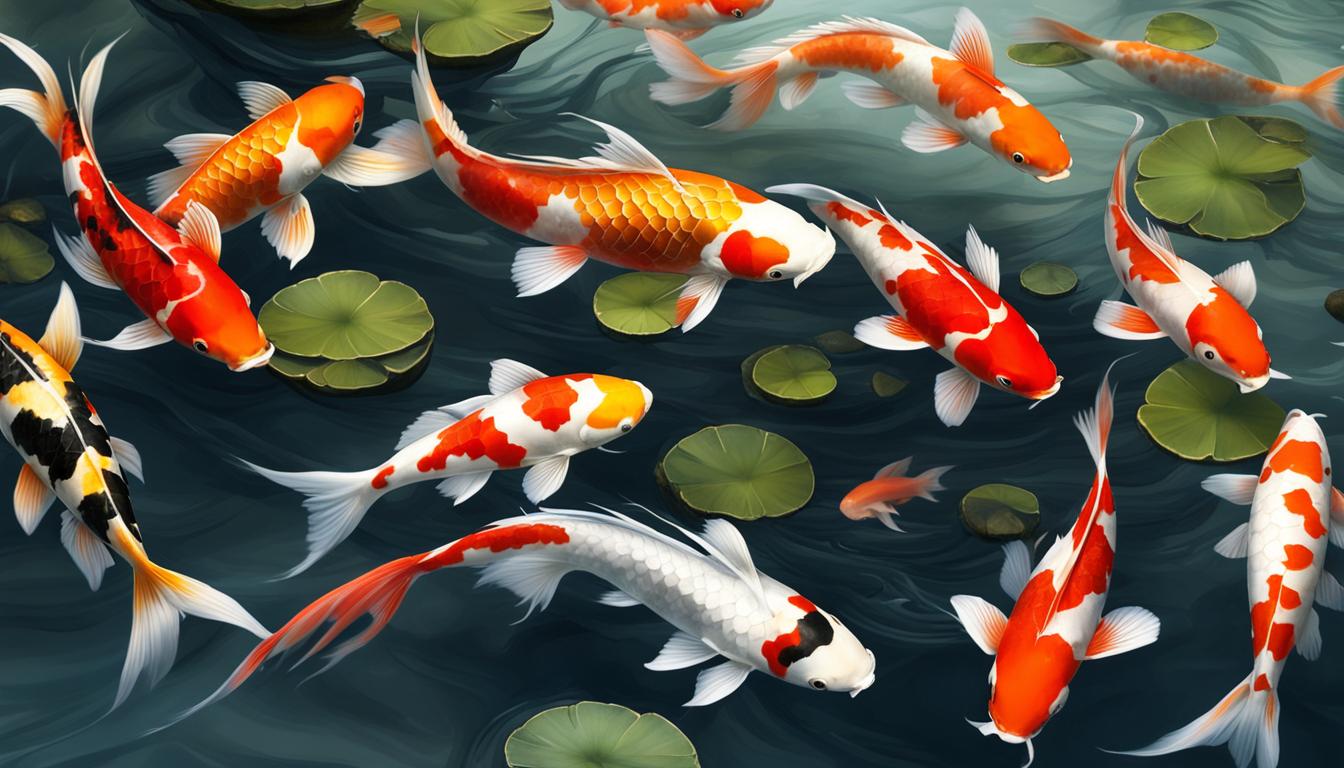
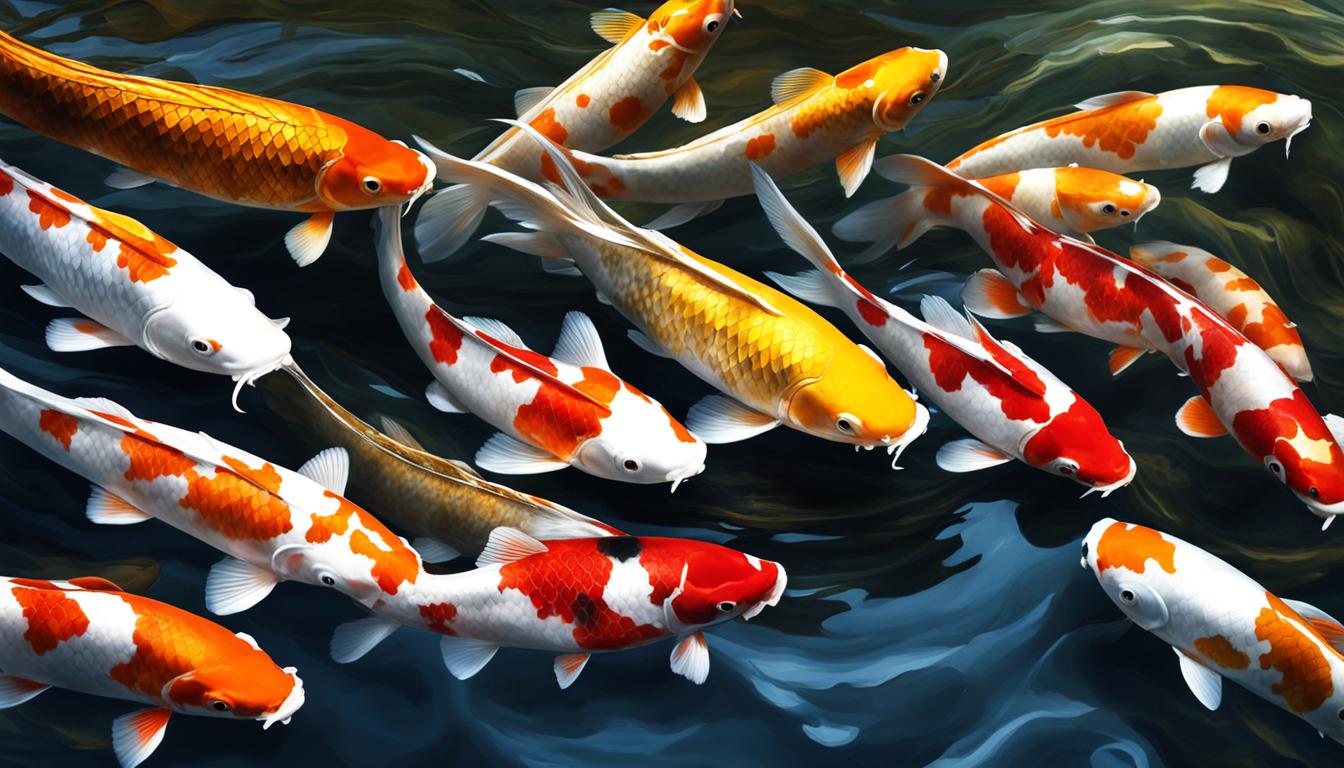
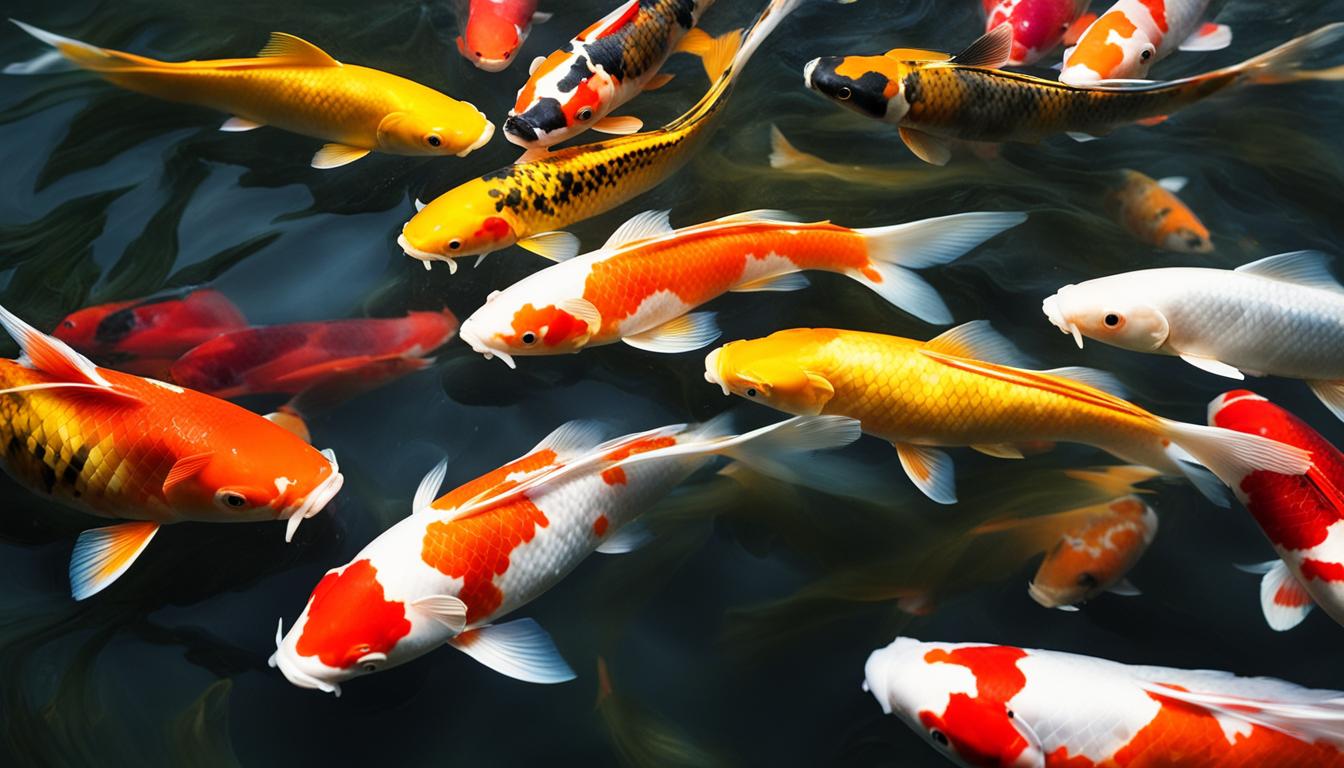

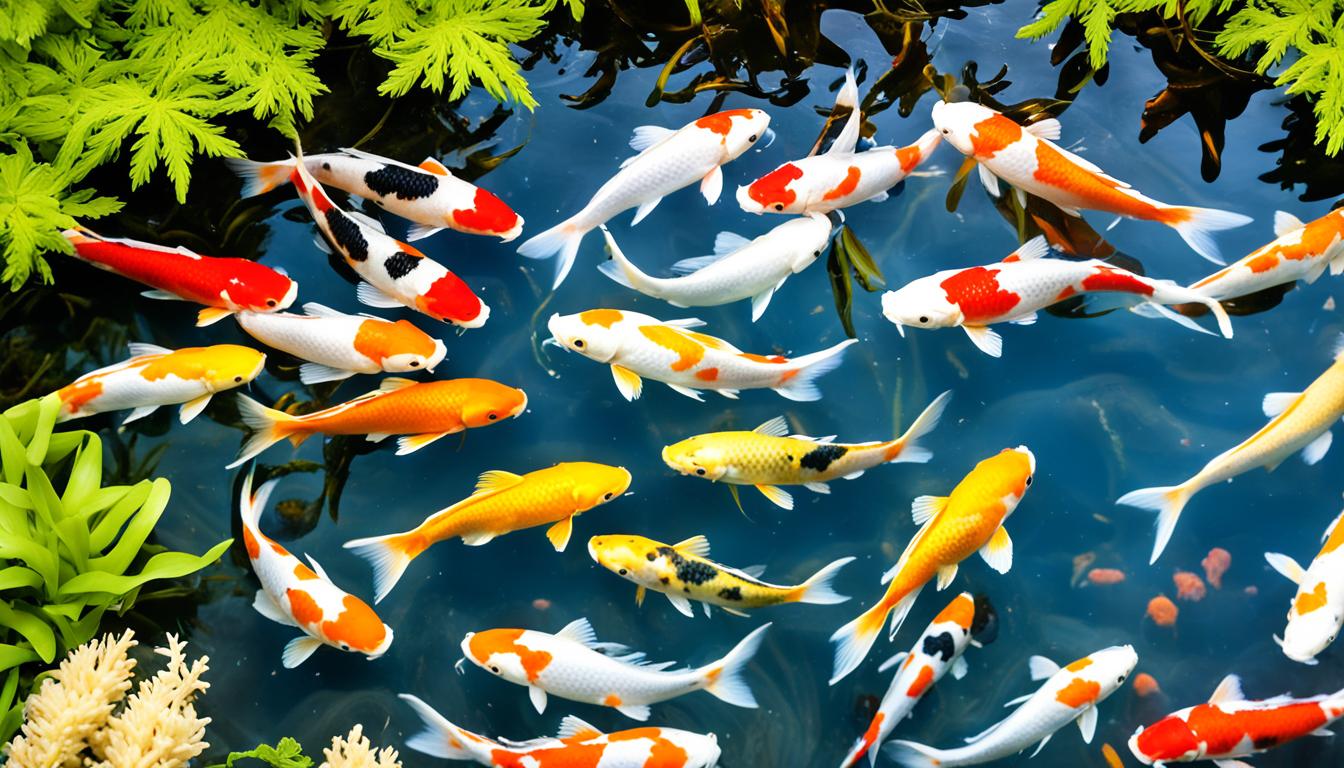




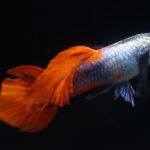
[…] fish that like to pick at snail parts, like tiger barbs or some cichlids. They’re not good tank mates for nerite […]
[…] fish, such as cichlids, should be avoided when selecting tank mates for gouramis. These fish are territorial and may bully or attack the gouramis, causing stress and […]
[…] filtration, and suitable tank mates is key to creating a healthy and thriving aquarium for your Strawberry Peacock cichlids. Remember to regularly monitor water parameters and perform routine maintenance to ensure […]